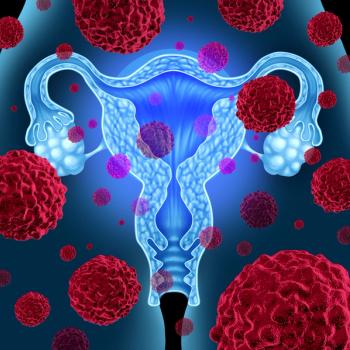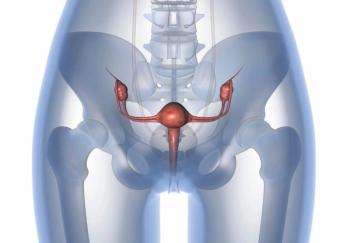
PARP Inhibitor Plus Chemo Means More PFS in Ovarian Cancer
The results of the first therapy to use a PARP inhibitor with chemotherapy for patients with ovarian cancer were presented at ESMO Congress 2019.
A PARP inhibitor used in combination with chemotherapy for first-line and maintenance treatment significantly improved progression-free survival (PFS) in stage III or IV high-grade serous ovarian cancer, according to new results from a Phase III trial.
The combination therapy was the first to use a PARP inhibitor combined with chemotherapy for newly-diagnosed patients, according to the results of the VELIA trial,
“These results further validated the role of this class of drug in the treatment of patients with ovarian cancer and offer a new therapeutic asset that can be initiative with the start of their adjuvant chemotherapy treatment,” said Robert L. Coleman, M.D., the lead investigator, of the University of Texas MD Anderson Cancer Center. “These results are encouraging and apply for a majority of newly-diagnosed ovarian cancer patients.”
The 1140 patients in the phase 3, double-blind trial were enrolled at 202 sites in 10 countries between 2015 and 2017. Twenty-six percent (298) made up the BRCAmutation cohort, 214 (19%) had a germline BRCAmutation, and 84 (7%) had a tissue-based BRCA mutation. Fifty-five percent (627 patients) were included in the homologous recombination deficiency (HRD) cohort (298 patients’ tumors were both HRD and were BRCAmutated, while 329 were HRD without a BRCAmutation).
Patients were randomized into 3 groups: a control arm with chemo and placebo followed by placebo maintenance, a chemotherapy and veliparib (Lynparza) treatment arm followed by placebo maintenance, and a veliparib-plus-chemo arm followed by veliparib maintenance.
The BRCA-mutation cohort with veliparib throughout showed a PFS period of 34.7 months, while the control group showed 22 months (HR, 0.44; 95% CI, 0.28-0.68; P<0.001). The HRD cohort showed a marked improvement, with 31.9 month to 20.5 months (HR, 0.57, 95% CI, 0.43-0.76;P<0.001).
All participants in the intent-to-treat population showed an improvement of 23.5 months vs 17.3 months (HR, 0.68; 95% CI; 0.56-0.83; P<0.001).
“Across all trial populations, a regimen of carboplatin, paclitaxel, and veliparib induction therapy followed by veliparib maintenance therapy led to significantly longer progression-free survival than carboplatin plus paclitaxel induction therapy alone,” the authors wrote. “The independent value of adding veliparib during induction therapy without veliparib maintenance was less clear.”
However, at the time of the study publication, the data on overall survival “were not sufficiently mature” in some of the cohorts. The study also mentioned that patients were enrolled “without regard to biomarker status.”
Other PARP inhibitor results were touted at this year’s ESMO Congress. The BROCADE3 phase 3 trial results also showed the value of veliparib combined with certain chemotherapies in advanced breast cancers.
Other PARP inhibitor/ovarian cancer results included: the addition of olaparib to bevacizumab maintenance therapy in
Susana Banerjee, of the Royal Marsden NHS Foundation Trust and the Institute of Cancer Research in London spoke at ESMO and said that the latest PARP inhibitor trials are promising-but prompt the need for further study into questions like which first-line PARP inhibitor treatment is best and how can the best ones be selected.
Disclosures:
Coleman, R., et al. (2019). Veliparib with First-Line Chemotherapy and as Maintenance Therapy in Ovarian Cancer | NEJM. [online] New England Journal of Medicine. Available at: https://www.nejm.org/doi/full/10.1056/NEJMoa1909707 [Accessed 2 Oct. 2019].
Newsletter
Stay up to date on recent advances in the multidisciplinary approach to cancer.

















































































